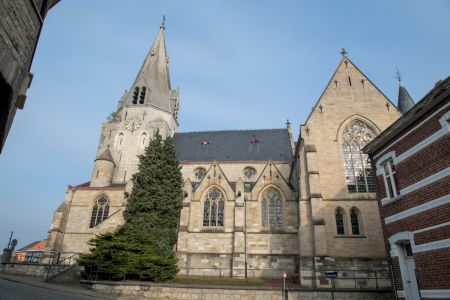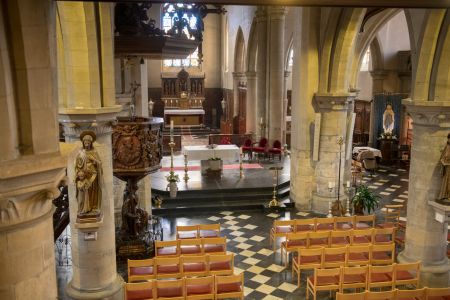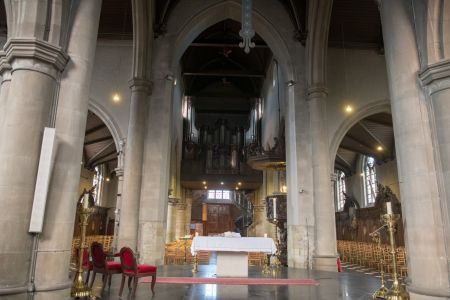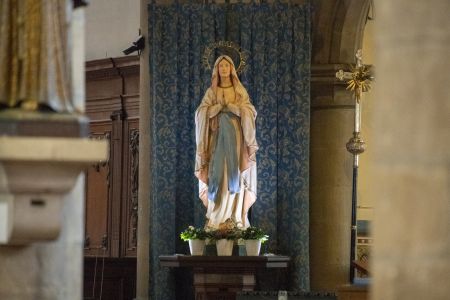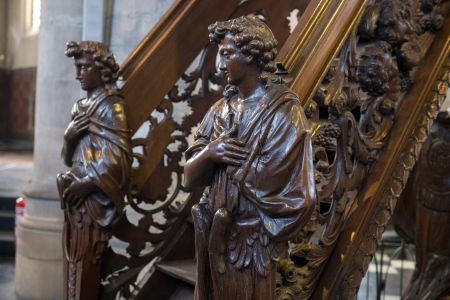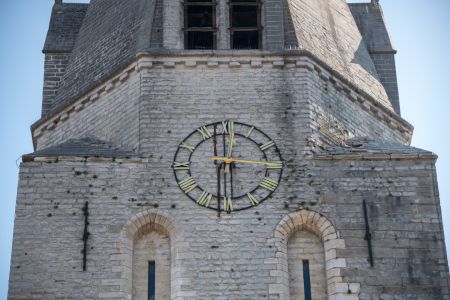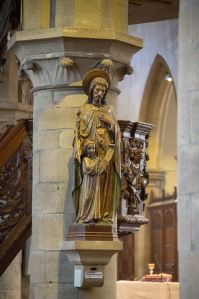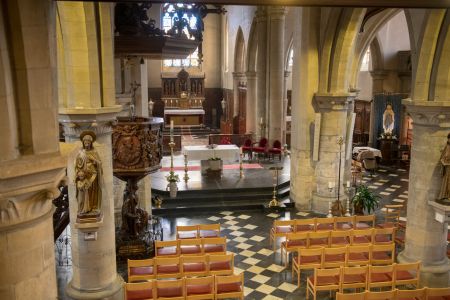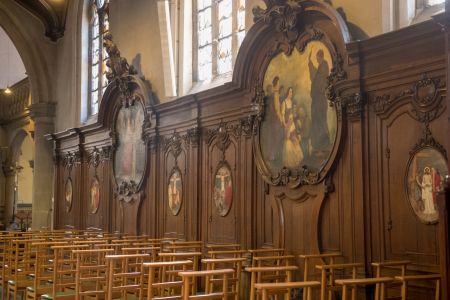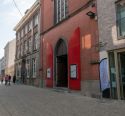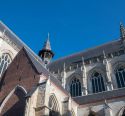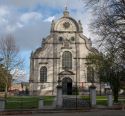Church | XIII-XX | Gothic | Catholic Church



Map
Opening hours
Church closed for restoration work.
Religious offices
Description
A legend is connected with the name of the city. A long time ago, a lion terrorised the region. No one was capable of killing it. But with the benediction of Saint Amand, evangelist of Flanders, the people succeeded in killing the lion. Saint Amand had a chapel built at the place, which took on the name ‘Lewe aan de Dender’ (lion on the Dendre).
The current church with three naves was built in the 13th century - beginning of the 14th century. The stone used is sandstone. Parts of the central nave, the south lateral nave and the west square tower are in late Gothic style.
In 1763, the south lateral nave was transformed; the north lateral nave was erected. In 1894-1895, under the direction of Julius Goethals (1855-1918), architect of the city of Aalst, the church, whose choir and transept are Neo-Gothic, experienced major transformations. The spire of the octagonal tower was added in 1942-1943 by the architect Stan Leurs.
The church, that was restored in 1972 and is now a regular venue for organ concerts on the organ made by Van Peteghem.
The interior has a wealth of wood sculptures principally from the 18th century.
KIKIRPA : Photo-library online
Photos
Remarkable elements
Stained glass windows (Olivier Ganton 1945-1951 & Martens 1970)
A beautiful stained-glass window in a four-axis, showing the symbolism of the 4 evangelists in a tetramorph. The lion stands for Mark, the bull for Luke, the eagle for John and the angel or man for Matthew. This theme is also reflected in the bas relief on the pulpit and the high altar.
The church still houses some special stained-glass windows. In the northern transept the stained-glass window was erected 'out of gratitude for the protection' WW II. It depicts the shield of Denderleeuw, the statue of the Straw Chapel of Mary, the lost cross of the Leeuwbrug-chapel.
In the high choir the stained-glass window shows The Last Supper in which Judas was not assigned a wreath of light. In the southern transept hangs a series of stained glass windows in Art Nouveau with reflecting glass.
You see beautiful multicoloured elements of the opposite stained-glass windows: coincidence or not?
Monumental pulpit
The monumental pulpit was designed by the brothers De Kinder (1717) according to the plan of P. Du Can. It is remarkable that Mary Magdalene is depicted there as an apostle.... Would the role of the woman in the church have ever been different?
The shell of the pulpit contains various decorative scenes, such as a detail from Rembandt's 'Return of the Prodigal Son' (the original is in the Hermitage in St. Petersburg). Furthermore you can see how the image that represents the Holy Church literally supports the word of God with its wisdom and knowledge.
Gravestone of the Lords of Liedekerke (16th century)
The funerary monument is set up in a Gothic niche with pinnacles and is conceived as a gisant, namely a sculpture of a reclining figure with a lion at its feet.
At the centre is the coat of arms with the crowned lion at the feet of the seigniory of Denderleeuw and Liedekerke, now separate municipalities. A judgment of the Council of Flanders on 09.01.1773 ruled that the Castle of the Lords was on the territory of Denderleeuw. The monument was restored in 1902 thanks to Colonel Aymar de Liedekerke and Lady Béranger.
Now this very old monument is included in the restoration plan of the architects Van Acker and Partners. Many elements are missing or damaged.
Painting 'The Emmaus disciples' by M.Dhase(1754 Brussels)
M. Dhase belonged to the Flemish school and was court painter of Maria-Thérésia. The canvas is located on the north side of the OLV altar. Restored in 1952 by painter Philemon Berckman from Geraardsbergen.
Christ is central and is flanked by both Emmaus disciples. They sit at a table set with bread and wine. In the afternoon, the lighting is optimal to enjoy this valuable work of art.
Damask painting in the high choir (atelier Bressens, 1913)
The burgundy red veil with beam pattern on a green collar depicts, among others, the Pius Pelicanus and her three cubs. This illustrates the compassion of the mother who pricks herself in the chest to bring her boy back to life after the father called her to order with a hard hand. The performance is based on medieval knowledge about this strange bird!
After the enormous damage in WW II, several murals were overpainted: angels, coats of arms, and did they disappear forever?
Louis XVI style panelling
Contains incorporated Stations of the Cross, oil on copperplate Leo Steel, Sleidinge 1915. Did this 14-part series survive WW II? They were put in the ground to protect them from confiscation.
Side aisle north: 2 medallions: saint Rochus and the plague sufferers, saint Rochus curing the sick from the plague. P. Spruyt 1727-1818 (copy of P.P. Rubens St- Martinuskerk Aalst). The plague claimed many victims here around 1666.
Transept: a wooden statue of this saint.
Side aisle south: 2 medallions of H.J. Geens 1789. Saint Amandus preaches to the unbelievers, Saint Amandus baptized Sigebertus.
You can find more pictures of this patron saint in this church.



